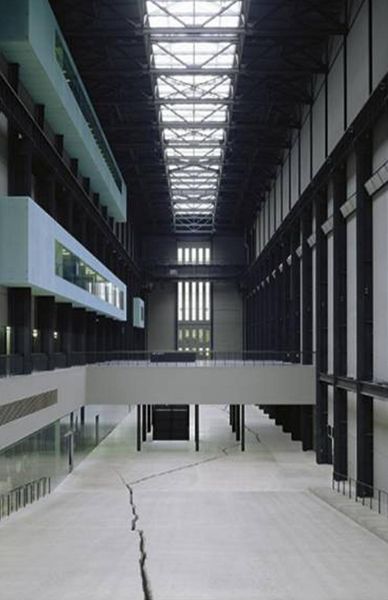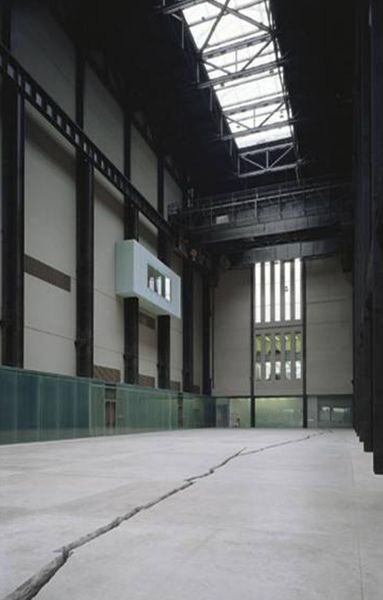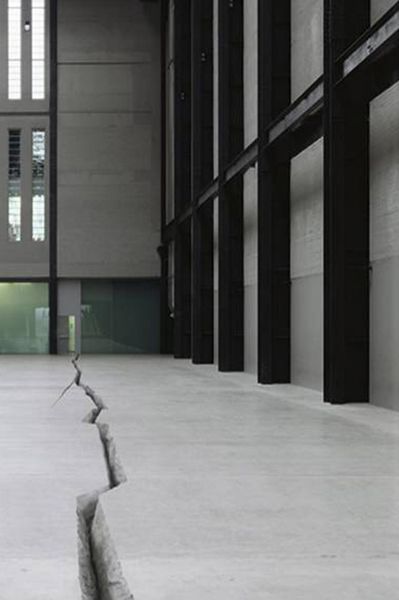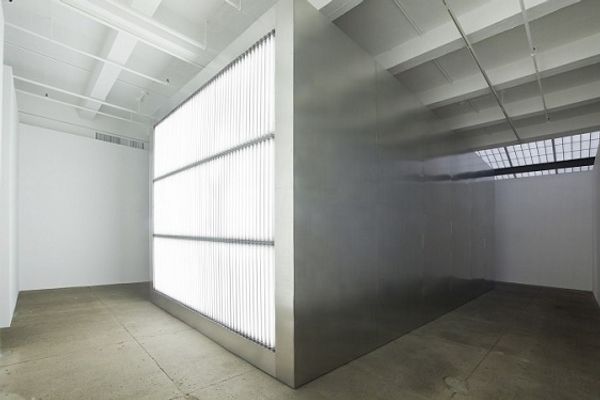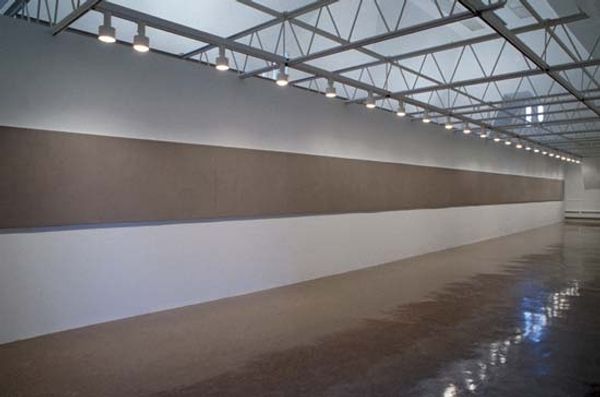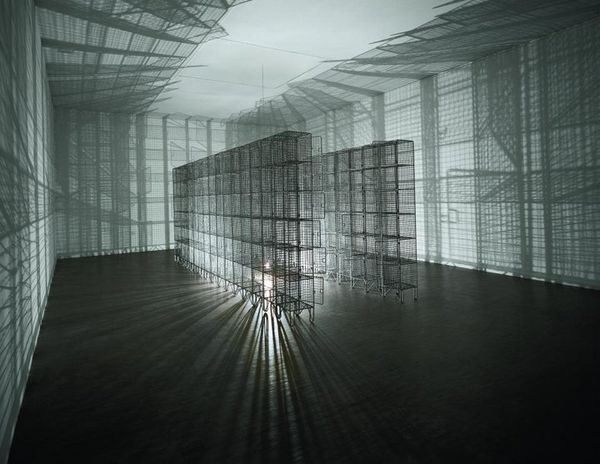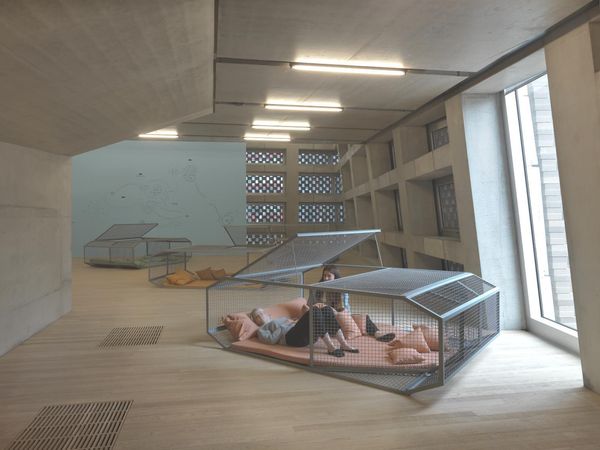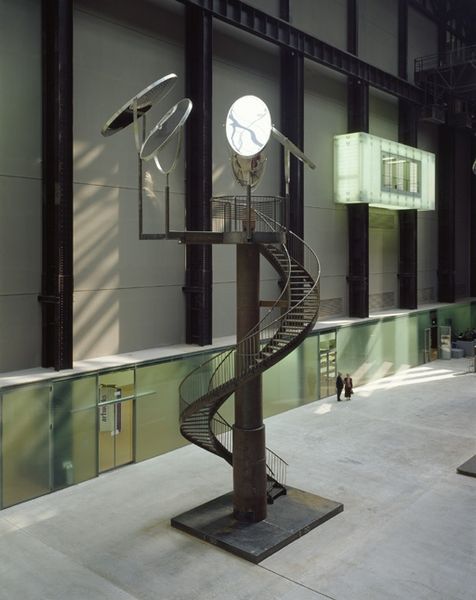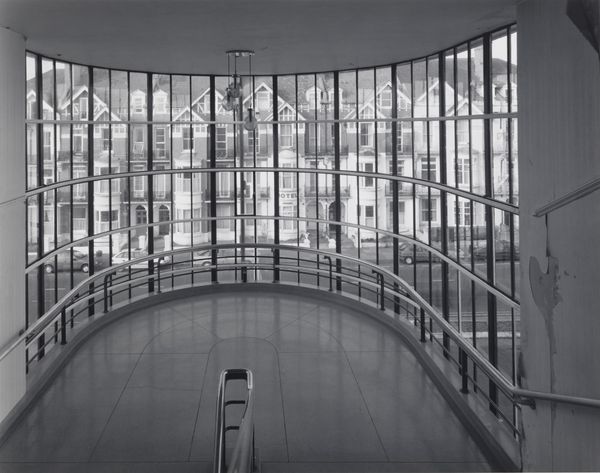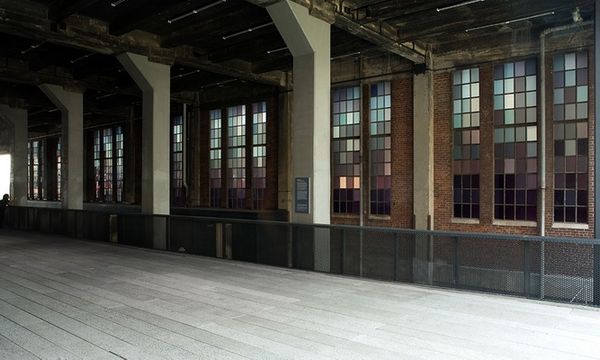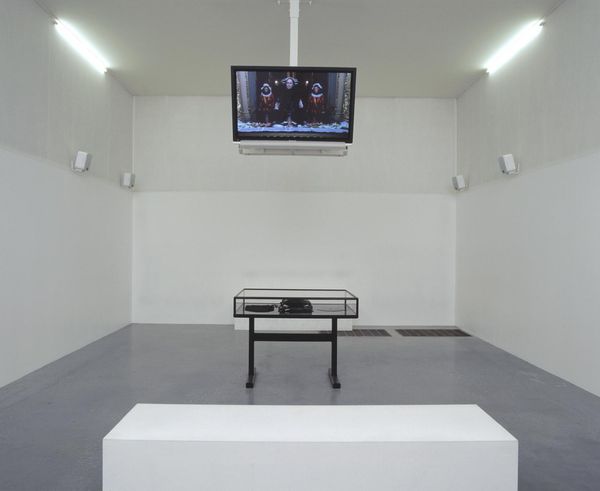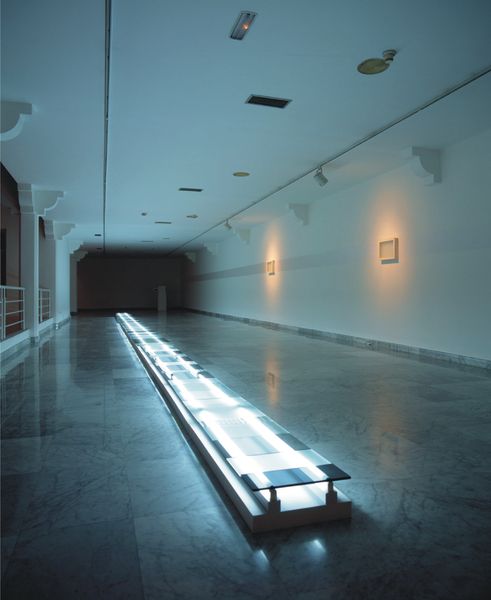
Dimensions: image: 640 x 490 mm
Copyright: © Doris Salcedo | CC-BY-NC-ND 4.0 DEED, Photo: Tate
Editor: This is Doris Salcedo's "Shibboleth II," housed in the Tate Modern. The long, fractured crevice cutting through the floor is immediately striking. What do you see in the composition and execution of this piece? Curator: Observe how the fissure's irregular path disrupts the gallery's rigid geometry. Salcedo masterfully employs negative space, transforming a solid surface into a void, a rupture. This displacement of plane invites us to contemplate the semiotics of fracture. Editor: So, you're drawn to the way the break interacts with the room's structure itself? Curator: Precisely. The gallery is no longer a neutral container, but a participant in a dialectic of wholeness and disintegration. A profound commentary on form, wouldn't you agree? Editor: I see what you mean. The formal analysis really illuminates the spatial dynamics. Curator: Indeed. A subtle shift in perception can yield profound insights.
Comments
Join the conversation
Join millions of artists and users on Artera today and experience the ultimate creative platform.
tate 7 months ago
⋮
Shibboleth II is a medium-size digital photograph by the Colombian artist Doris Salcedo that depicts the Turbine Hall of Tate Modern, London, with a long narrow crack running along its floor. The print is part of a portfolio of four photographs each showing different views of the same scene, including Shibboleth I (Tate P20334), Shibboleth III (Tate P20336) and Shibboleth IV (Tate P20337), and the portfolio as a whole is number one in an edition of forty-five plus ten artist’s proofs. The photographs were made as part of Salcedo’s 2007 installation project for the Unilever Series at Tate Modern, also titled Shibboleth, which involved the artist creating a deep fissure in the floor of the Turbine Hall that stretched from one end of the gallery to the other, into which she placed a concrete cast of a Colombian rock face with a wire chain-link fence set into it. These photographs are digital composites made up of images of the Turbine Hall seen from four different angles and photographs that Salcedo took of a small-scale model of the cracked floor that she made in her studio in Bogotá, Colombia.
